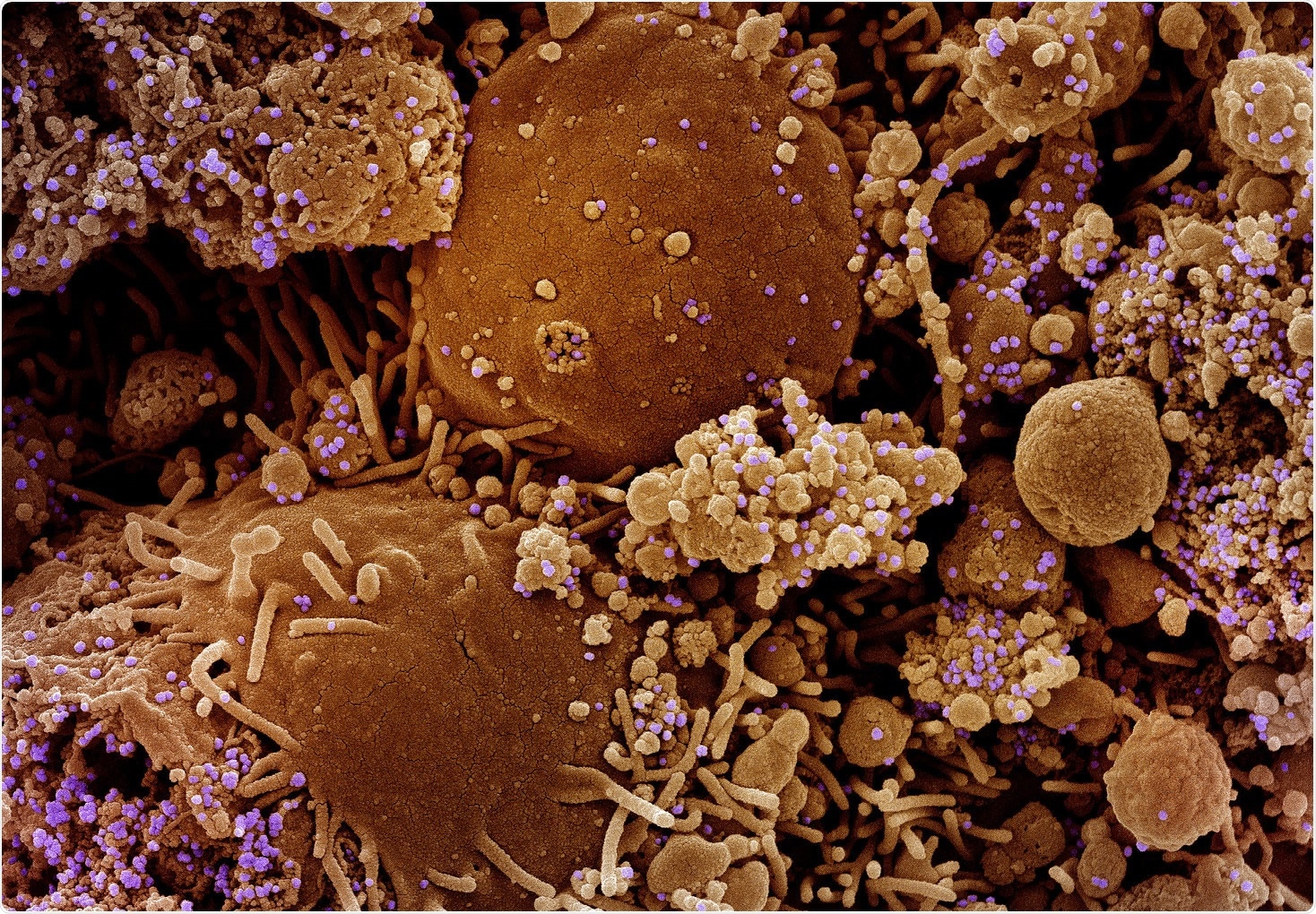Small portion of COVID-19 patients infectious long-term
In late December 2019, a novel pneumonia-like lung infection was reported in the Chinese province of Hubei. This, in turn, led to the ongoing coronavirus disease-19 (COVID-19) pandemic. COVID-19 is caused by severe acute respiratory syndrome coronavirus 2 (SARS-CoV-2), which is closely related to SARS (Severe Acute Respiratory Syndrome) and MERS (the Middle East Respiratory Syndrome Coronavirus).
This virus is primarily transmitted through droplet infection and also aerosols and may cause mild, moderate, or severe disease. The infectious virus can be isolated from COVID-19 patients during the first week of symptoms and from asymptomatic carriers.
In most cases, infected patients are quarantined for 14 days and then released without further testing if they have been asymptomatic for at least 48 hours. However, certain reports have indicated infectivity for at least 24 days after disease onset in patients with severe COVID-19.
The purpose of a new study published in the journal Allergy was to investigate if the persistence of infectious virus particles for extended periods—of more than four weeks—only occurs in patients with severe COVID-19 or may also occur in patients with mild symptoms.

The Study
Here, specimens from SARS-CoV-2 positive or negative patients’ swabs were resuspended in 1 ml of Vero E6 culture medium immediately after collection. After 48 hours, supernatant and cells were visually checked for indications of infections
The long-term PCR-positive patients were P1-P3, whereas the PCR-negative volunteers were denoted as P4-P6. In P1 (a 27-year-old male), the cycle threshold (Ct) values were low after five days, whereas in P2 (a 36-year-old male) and P3 (A 36-year-old female), low Ct levels were detected only after seven days.
On the other hand, all negative controls elicited high values of Ct compared to the water control. Moreover, detection of the RNA-dependent RNA-polymerase (RdRP) gene was always associated with the highest Ct values in COVID-19 positive patients.
Viral replication was evidenced through immunofluorescence microscopy in cells infected with the isolates from P1 and P2. In addition, spike-specific signals were also detected on infection with specimens of P3. Thus, a replication-competent infectious virus was present in the pharyngeal tract of all long-term PCR-positive patients.
In addition, coronaviruses were identified through electron microscopy in isolates of all three tested patients. This reconfirmed that the pharyngeal tract of all three tested long-term PCR-positive patients contained infectious, replication-competent SARS-CoV-2.
SARS-CoV-2 isolated from long-term infected patients belonged to 20A and 20C clade. A detailed analysis of the whole genome depicted eleven mutations in P1 and P3 and ten in P2 compared to the aligned strain NC_045512.2. These mutations include common mutations D614G of the spike protein, as well as the often co-occurring mutations P314L in ORF1b/RdRP and T265I in ORF1a 23-26.
Additionally, the Q57H mutation in ORF3a and the S686G mutation in the spike were identified. Other less common mutations – H125Y in the M protein; mutations V818A in ORF1b; D35Y and A51S in ORF8; and T95I and H245R in the spike protein could also be identified. At the same time, there were no definite abnormalities within the receptor-binding domain (RBD).
RBD-specific antibodies were detected in all three patients. A higher immunoglobulin (Ig) G response was found in P1; a higher IgM response was elicited by P2; and low IgA levels were found in P1 and P2.
When compared to SARS-CoV-2 infected subjects, all long-term PCR-positive individuals had lower values of IgG and IgA antibody levels, but higher IgM levels. The findings suggested that the pattern of sequential epitopes differs among long-term infected patients and those who could achieve the eradication of the infection within ten days.
Furthermore, neutralizing capacities of the three used sera—with low (S1), medium (S2), and high (S3) neutralizing capacity—from long-term positive patients differed accordingly when tested on an isolate of the SARS-CoV-2 alpha-variant (B.1.1.7). The results indicated that isolates of P2 and P3 could be more efficiently neutralized by sera of vaccinated individuals compared to SARS-CoV-2 variant B.1.1.7. Meanwhile, infection with isolates of P1 could be less efficiently blocked by all sera compared to the other isolates of long-term positive patients or to the alpha-variant.
The findings reinstate the concept that long-term PCR-positive patients could be carriers of intact and infectious viruses. Therefore, discontinuing quarantine after ten days without PCR-based testing must be reconsidered to curtail the risk of virus transmission.
The results depicted that active virus particles remained in the deep pharyngeal area of patients who had recovered from mild symptomatic COVID-19 disease for up to 37 days. Hence, there is an urgent medical need to understand the pathophysiology of the persistent active SARS-CoV-2 particles in some patients.
- Zahn, T., et al. (2021), “Persistence of infectious SARS‐CoV‐2 particles for up to 37 days in patients with mild COVID‐19”, Allergy, Doi: 10.1111/all.15138, https://onlinelibrary.wiley.com/doi/10.1111/all.15138
Posted in: Child Health News | Men's Health News | Medical Research News | Women's Health News | Disease/Infection News
Tags: Allergy, Antibodies, Antibody, Coronavirus, Coronavirus Disease COVID-19, CT, Electron, Electron Microscopy, Gene, Genome, Immunoglobulin, Microscopy, Mutation, Pandemic, Pathophysiology, Pneumonia, Polymerase, Protein, Receptor, Respiratory, RNA, SARS, SARS-CoV-2, Severe Acute Respiratory, Severe Acute Respiratory Syndrome, Spike Protein, Syndrome, Virus

Written by
Nidhi Saha
I am a medical content writer and editor. My interests lie in public health awareness and medical communication. I have worked as a clinical dentist and as a consultant research writer in an Indian medical publishing house. It is my constant endeavor is to update knowledge on newer treatment modalities relating to various medical fields. I have also aided in proofreading and publication of manuscripts in accredited medical journals. I like to sketch, read and listen to music in my leisure time.
Source: Read Full Article
